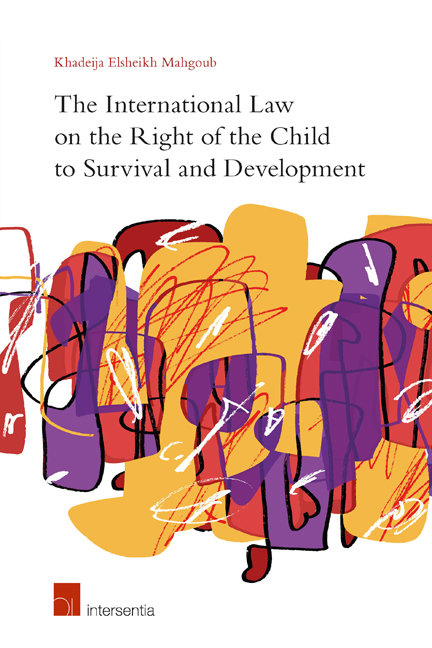Book contents
- Frontmatter
- Acknowledgements
- Contents
- Introduction
- Chapter 1 Historical Background
- Chapter 2 Current and Possible Interpretations of Article 6(2). Analytical Perspectives to the Work of the Committee on the Rights of the Child
- Chapter 3 The Nature of Article 6(2) on the Survival and Development of the Child
- Chapter 4 The Survival and Development of the Child and the Child's Human Dignity
- Chapter 5 Who is Responsible? The Obligation of the State Party to Create Measures and Conditions Necessary for the Survival and Development of the Child
- Chapter 6 Case Studies on Article 6(2)
- Conclusion
- Bibliography
- Official Documents
Chapter 1 - Historical Background
Published online by Cambridge University Press: 28 November 2017
- Frontmatter
- Acknowledgements
- Contents
- Introduction
- Chapter 1 Historical Background
- Chapter 2 Current and Possible Interpretations of Article 6(2). Analytical Perspectives to the Work of the Committee on the Rights of the Child
- Chapter 3 The Nature of Article 6(2) on the Survival and Development of the Child
- Chapter 4 The Survival and Development of the Child and the Child's Human Dignity
- Chapter 5 Who is Responsible? The Obligation of the State Party to Create Measures and Conditions Necessary for the Survival and Development of the Child
- Chapter 6 Case Studies on Article 6(2)
- Conclusion
- Bibliography
- Official Documents
Summary
‘Its language had been left more broadly stated than some would have liked.’
James Grant, Former Executive Director of UNICEFINTRODUCTION
On 20 November 1989 the United Nations (UN) General Assembly (GA) adopted Resolution A/RES/44/25, to which the Convention on the Rights of the Child (CRC) is annexed. Article 6(2) of this Convention is concerned with the right of the child to survival and development and reads as follows: ‘States Parties shall ensure to the maximum extent possible the survival and development of the child.’ This article speaks about two rights: the right of the child to survival and the right of the child to development.
This chapter analyses the drafting history of article 6(2). The discussion starts with an analysis of the relationship between the concept of development, including human development, and the Convention on the Rights of the Child. This is important in order to put article 6(2) of the CRC in its original context as a right to development. The chapter then includes a descriptive analysis of the international instruments on the protection of the rights of the child in general and his or her right to development in particular prior to the adoption of the CRC. Following that, a detailed analysis of the drafting history of article 6(2) is included. Lastly, in an attempt to have a comprehensive historical analysis of article 6(2), the chapter discusses what can be called the ‘unoffi cial’ historical background of article 6(2), examining, in this regard, the role of United Nations Children's Fund (UNICEF) in the draft ing of the article and the possible reflection of the adoption of the 1986 Declaration on the Right to Development.
This historical analysis is crucial in relation to the comprehensive interpretation, classification and implementation of article 6(2). It is also very important to point out that this analysis is not approached philosophically. Moreover, it is not about debating the nature or the historical evolution of the concept of children's rights or the arguments concerned with whether to grant children any rights or not.
- Type
- Chapter
- Information
- Publisher: IntersentiaPrint publication year: 2015



